If it was up to me to name this wild flower I’d call it ‘Gardener’s Nightmare’. No matter how many I pull out I always seem to find more of them in our garden. A lot more, everywhere. But according to the herbalists of old, it’s not a nightmare at all, it’s a blessed herb.
Matthaeus Platearius, the12th Century physician of Salerno and writer of “The Book of Simple Medicines” was quoted twice, mentioning the plant Herba Benedicta (Blessed Herb). Firstly in 1491 in the Ortus Sanitatus (one of the first herbals, printed using the newly discovered printing technique) and then in 1879 by Richard Chandler Alexander Prior M.D. (1809-1902) in his book ‘On the Popular Names of British Plants’:
"where the root is in the house the devil can do nothing, and flies from it: wherefore it is blessed above all other herbs. […] if a man carries this root about him, no venomous beast can harm him […] where it is growing in a garden, no venomous beast will approach within scent of it.”
There we have it, a blessed herb. And with plenty of it growing in our garden, I’m probably pretty safe from venomous beasts. Phew!
Devils and venomous beasts aside, the root smells of cloves and has been used in ancient households to keep wool and linen-eating moths, rather than venomous beasts, at bay. Next time I pull out some Herb Bennet I may well keep the root and use it to save my jumpers. Although it appears that I might have to wait till next year: the ancient herbalists recommend you harvest the root on the 25th of March exactly, when it’s at its most powerful.
Nicholas Culpepper, (1616-1654) herbalist, physician, and writer of ‘The Complete Herbal’ (1653), suggests we all keep some in our home to treat just about any ailment going, including problems of the chest, liver, stomach, heart, the plague, bruises, spots, spitting of blood and trapped wind. A blessing indeed.
A hundred years earlier, herbalist John Gerard (1545-1612) recommended boiling the root in wine to make a cordial, to be used as a remedy for diarrhoea or for wounds inflicted by venomous beasts. And as late as 1944 it was noted in the ‘Journal of Gypsy Medicine’, that the root could be used to cure upset stomachs.
Interestingly, the root does have the same active ingredient as cloves. This is a substance called ‘Eugenol’ which has anti-inflammatory, antiseptic, pain killing and astringent properties. Eugenol should be treated with care though as it is extremely powerful and can be dangerous when you use too much, not unlike Digoxin in Foxgloves.
In other languages, the names refer to both the clove-like properties, and to it being a blessed plant: ‘Nagelkruid’ (Clove Herb) in Dutch; Carriofillata in Italian (from Latin ‘caryophyllum’ which means ‘clove’); Nelkenwurz (Real Clove Root) and Benediktenkraut (Blessed Herb) in German. It’s also known as Benedicta in Spanish and Herbe de Saint Benoit in French.
Another common name for Herb Bennet is Avens or Wood Avens. ‘Wood’ comes from the Old English word ‘Wudu’ meaning a group of trees or the material trees are made of. But where the word ‘Avens’ comes from is still a mystery. There are a few suggestions, but none of these have been confirmed. Some say it might come from the word ‘Avencia’, a Middle Latin word for clover, but nobody really knows. Richard C.A. Prior M.D. wrote his own theory in his 1879 book:
“Avens […] Avance, a word of obscure origin, and quite unintelligible, spelt also auartia, anantia, arancia, amancia, and enantica. As this plant was supposed to ward off the devil and evil spirits, venomous serpents, and wild beasts, it is probable that the Greek évavτia , in the sense of 'antidote' may be the original and proper form of the word.”
The scientific word Geum Urbanum also comes from Greek, either from ‘Geuein’ meaning ‘to enjoy’ or ‘Geno’ meaning ‘pleasant fragrance’, again a reference to the smell of the root. Urbanum (Latin) means ‘where people live’ - Herb Bennet often grows near shrubs and trees in urban areas.
Last, but not least, another blessing: before hops were introduced to the British Isles in the 14th century by the Flemish, Herb Bennett was one of the herbs used in brewing and the flavouring of Ale.
Other names for Herb Bennet are: Colewort, City Avens, Wild Rye, Way Bennet, Goldy Star, Clove Root.
If you enjoyed reading this, you might enjoy reading about other wildflowers too. You can easily find all posts written so far in the Flowerology alphabetical archive . If you’d like to know more about the background of Flowerology and Chantal, you can read more in the about page.
This newsletter is NOT a field guide for flower identification. It’s often difficult to tell the difference between harmless plants and poisonous plants and some flowers are rare and protected by law, so, NEVER pick or use any plants or flowers if you’re not sure about them.
illustrations and text ©Chantal Bourgonje


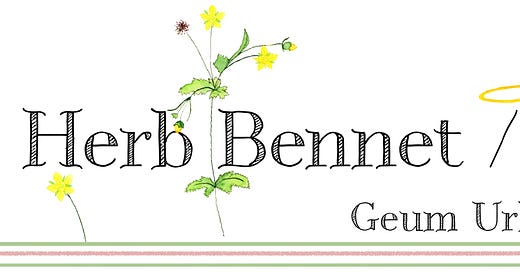



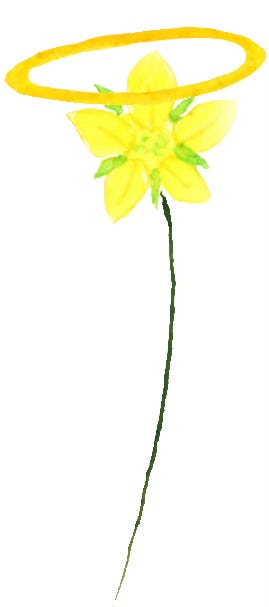
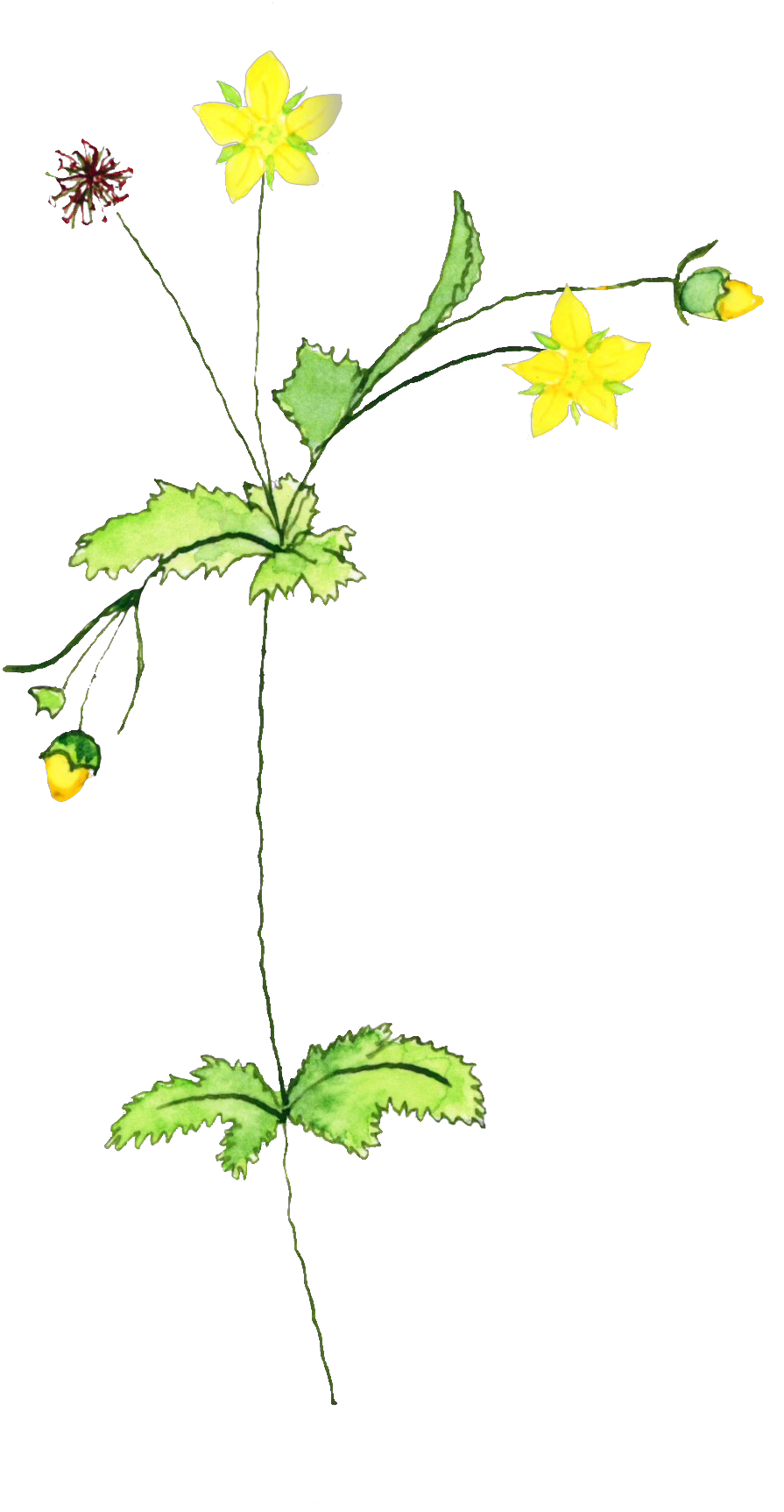
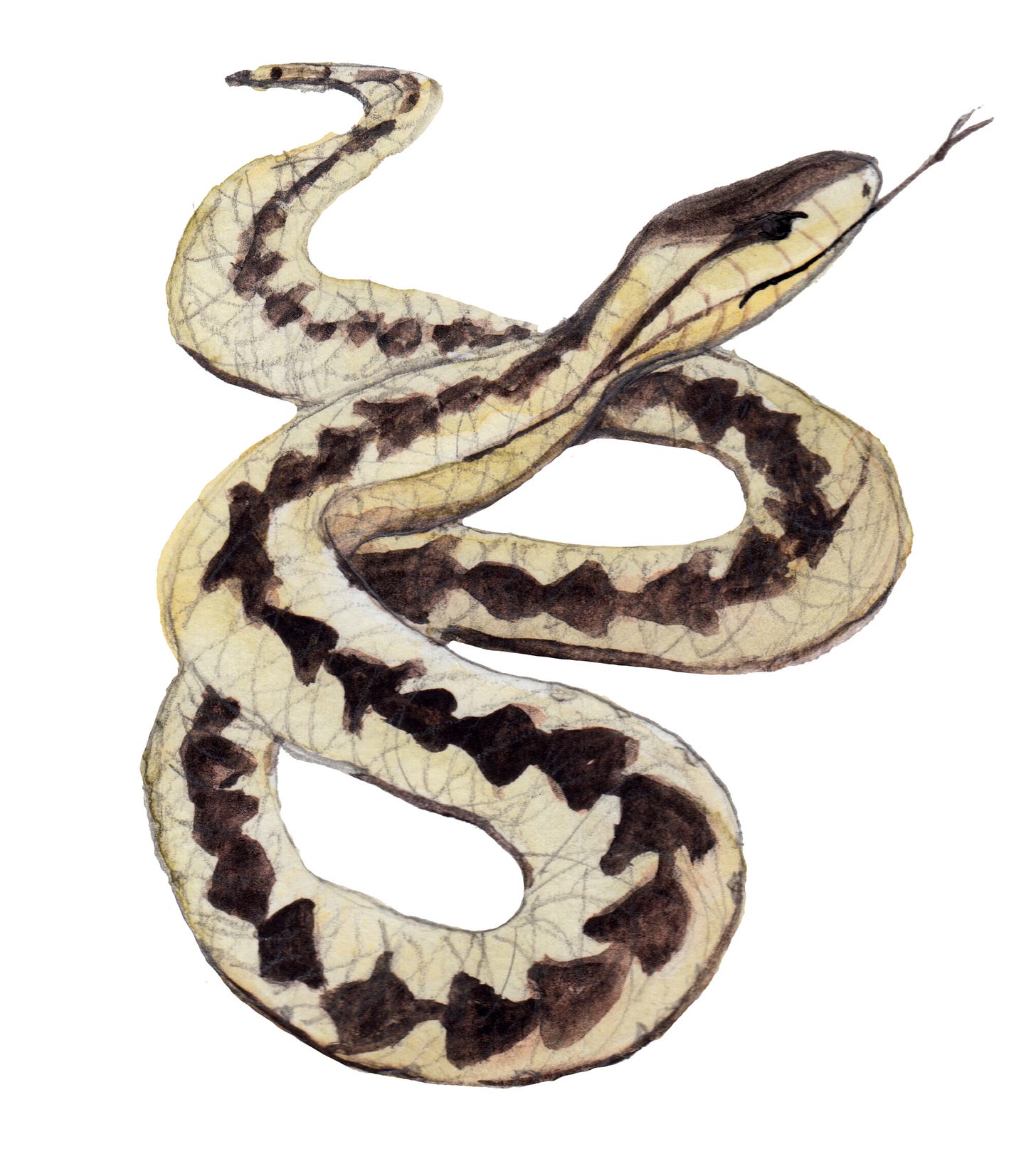
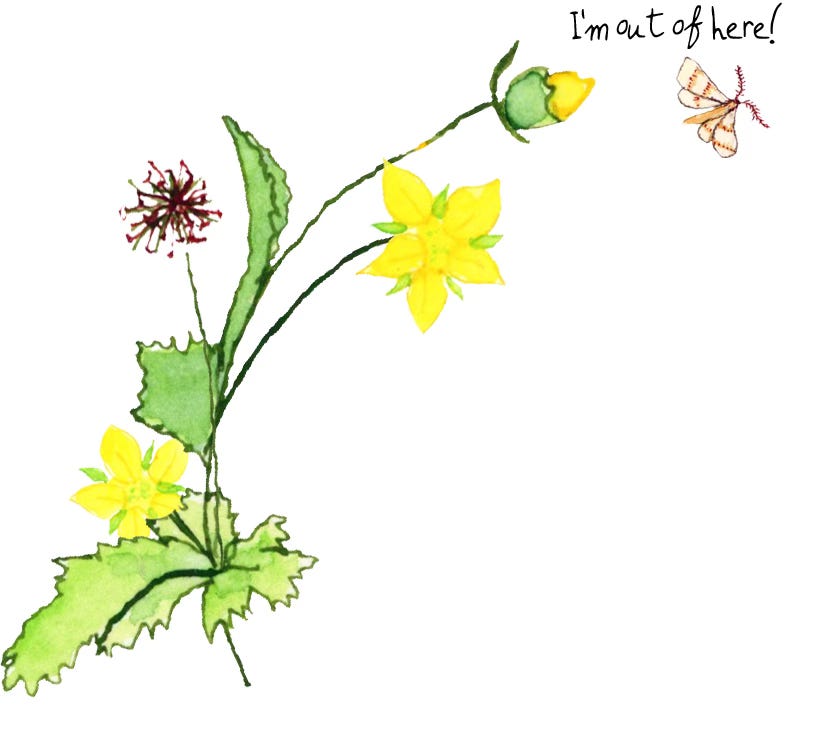
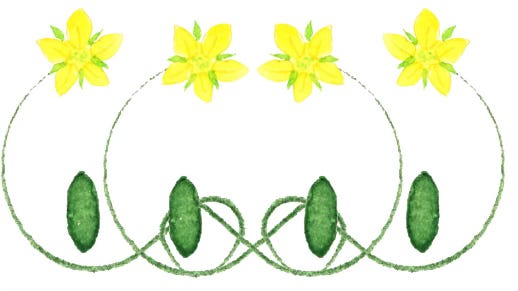
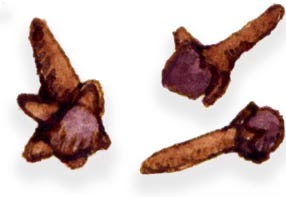
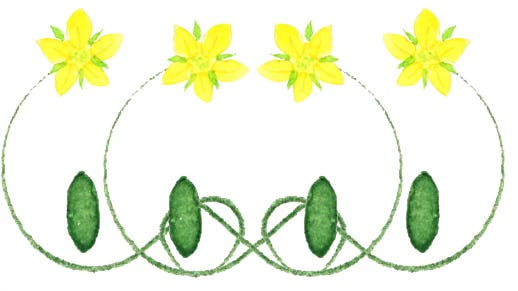
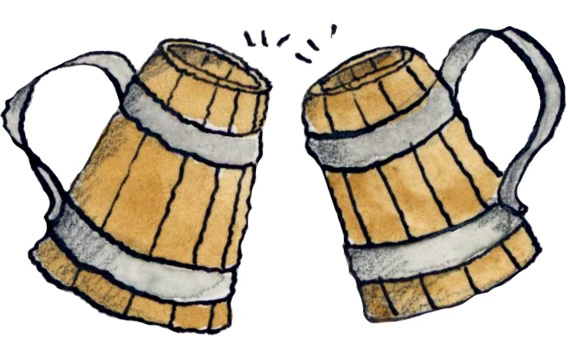

Oh man, those venomous beasts!
I love these flowers. They always make me think of fairies. Have only known them as wood avens, though never thought about the origin of 'aven' - just thought that's what it referred to if you know what I mean?!